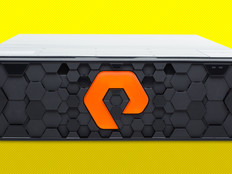NHIT Week 2018: The Impact of Power Management on Healthcare IT Innovation
The digital transformation of the healthcare industry has gained speed in recent years, extending beyond electronic medical records to encompass a complete revitalization of how the industry operates. From medical devices to tablets, digital technologies have slowly but surely helped to modernize the industry as providers seek to harness these technologies to deliver better patient care.
In this new era of digital healthcare innovation, one frequently overlooked key to success for healthcare IT organizations is effective power management. The emergence of the Internet of Things, cloud computing, mobile and other innovations have transformed the way healthcare is delivered. This, in turn, transforms how healthcare IT professionals think about powering these innovations in ways that can efficiently deliver reliable, mission-critical information.
DOWNLOAD: Check out how organizations are tapping connected technologies to streamline operations!
Appropriate Power Protects Against Downtime
As digital tools have become standard across more of the industry, organizations have shifted to cloud-based systems to manage and store essential data, making the data center — or, in the case of smaller facilities, the network closet — an increasingly essential component of the healthcare IT landscape. More critical data is now being stored via a combination of on-premises and off-premises infrastructure, which requires new ways of thinking about how to how to power technology deployments to ensure 24/7 uptime and protection of critical data.
With the number of blackouts and power outages continuing to grow across the country — Eaton’s blackout tracker logged 3,879 separate U.S. power outages in 2016, the greatest number since the company began tracking in 2008 — how providers protect and manage their data is more critical than ever. Unexpected outages not only threaten the efficiency of these systems, but can have large, unexpected cost implications. Moreover, in a healthcare environment where the ability to access patient data can be a life-or-death proposition, any loss of business continuity is simply unacceptable.
JOIN THE CONVERSATION: Follow @CDW_Healthcare on Twitter for continued #NHITWeek coverage!
4 Steps to Build a Health IT Power Management Strategy
For healthcare IT organizations that have transitioned considerable resources to virtualized or cloud infrastructures, it is imperative to devise power management strategies that protect against downtime and loss of essential data. Some simple steps for accomplishing this include:
1. Assess your overall power protection solution:
If your facility isn’t already protected, determine the type of uninterruptible power system you need, the best deployment strategy and how much capacity is required to support your business. The right UPS can provide essential power backup service in the event of an outage and, with advancements such as lithium-ion batteries, can be an investment that can last for years to come.
2. Consider power management software:
Power monitoring and management solutions significantly enhance UPS functionality, enabling IT personnel to remotely monitor a single UPS up to an entire enterprise network with an array of devices and components from different manufacturers. With adequate backup runtime, modern software can also facilitate the safe movement of data to a backup site to maintain IT continuity.
3. Implement remote management:
Remote power management enables administrators to oversee their entire network environment from any location in the world. By allowing administrators to securely control the power to every piece of equipment in the data center, remote management facilitates more efficient server management and reduces equipment downtime by giving administrators direct access to power control.
4. Understand the value of power distribution units:
A PDU can be fitted with multiple outputs designed to distribute electric power, especially to racks of computers and networking equipment located within a data center. With a solution that offers an interactive web-enabled interface, users can benefit from real-time monitoring for power-quality status and fast response to power-related events.
Over the next few years, healthcare innovation will continue to march on as organizations seek to capitalize on the efficiencies generated by digital technologies. As providers seek to keep pace with innovation, power management will play an increasing role in the ability of organizations to protect critical data and keep their operations up and running during unplanned outages and other events.
Check out HealthTech’s NHIT Week coverage on our event page, or follow the conversation at @CDW_Healthcare or with the hashtag #NHITWeek.









